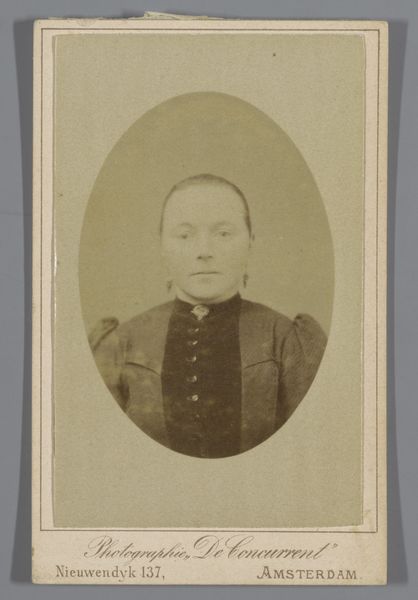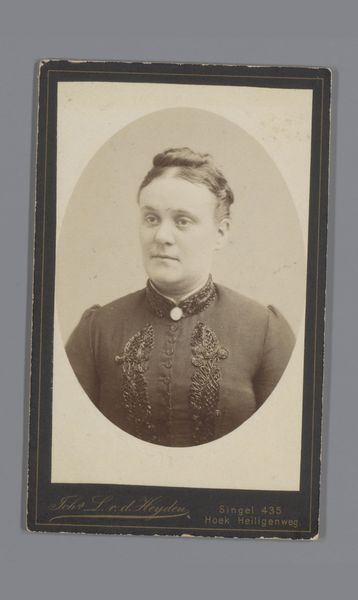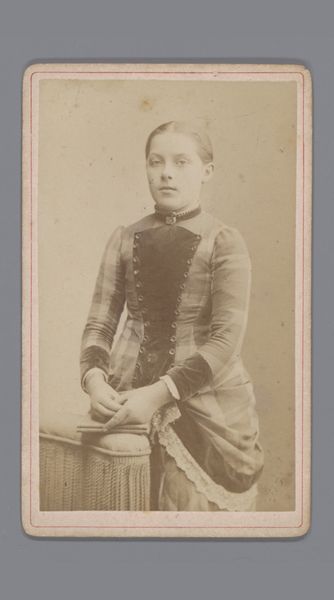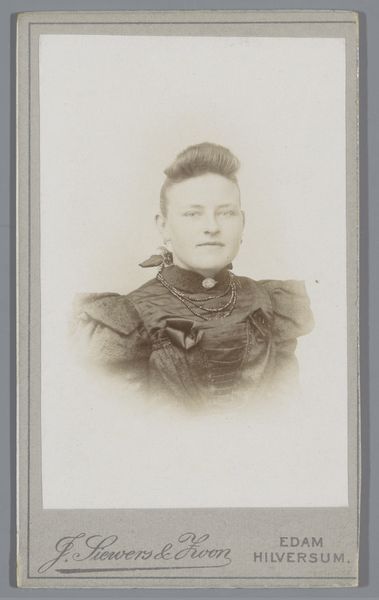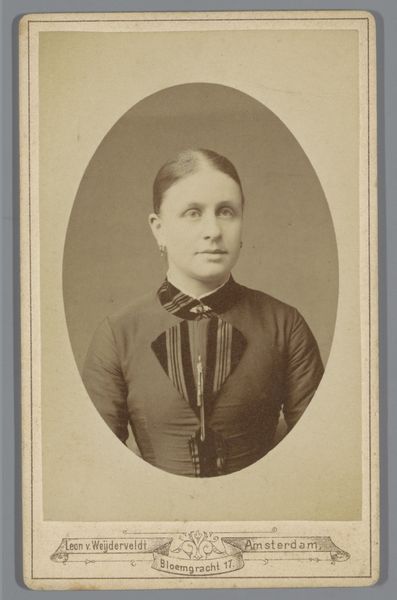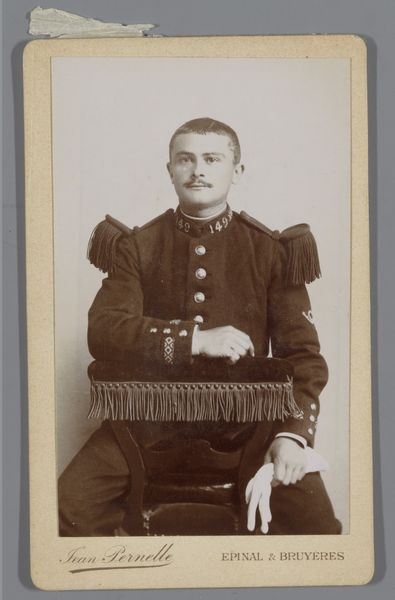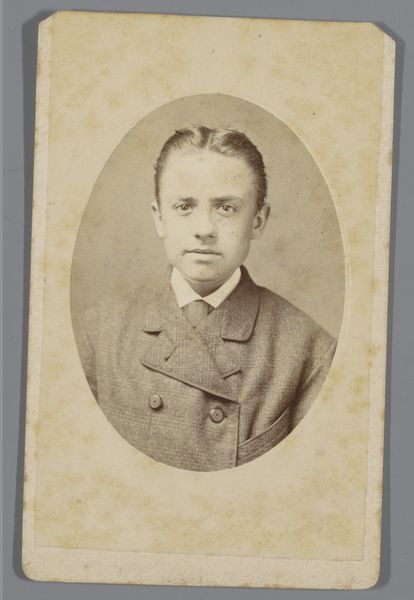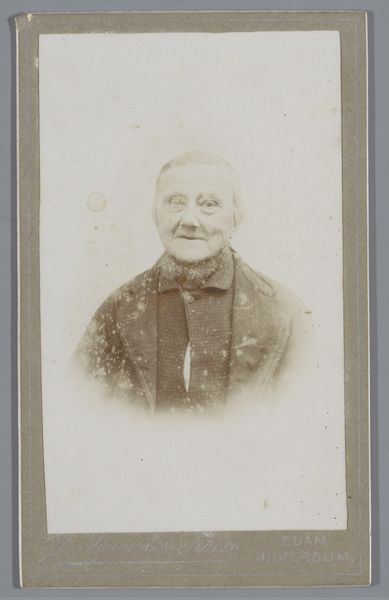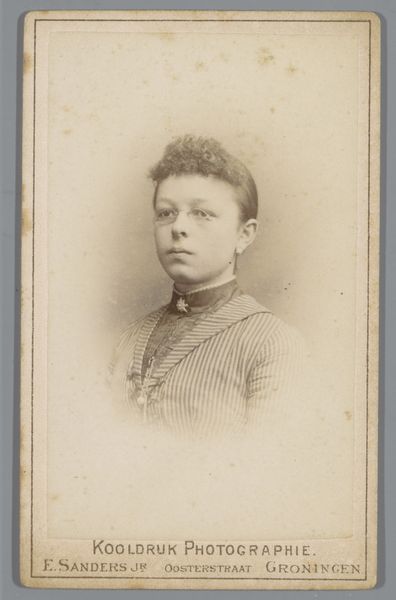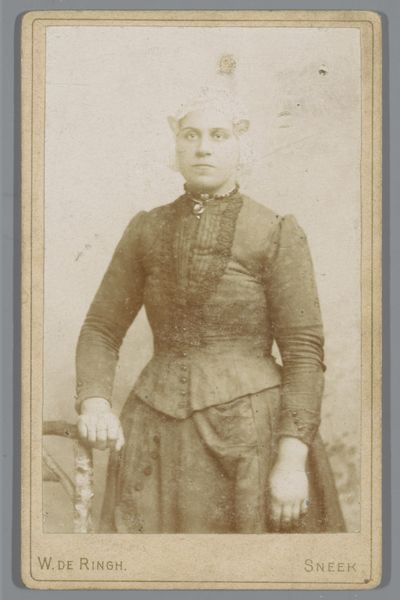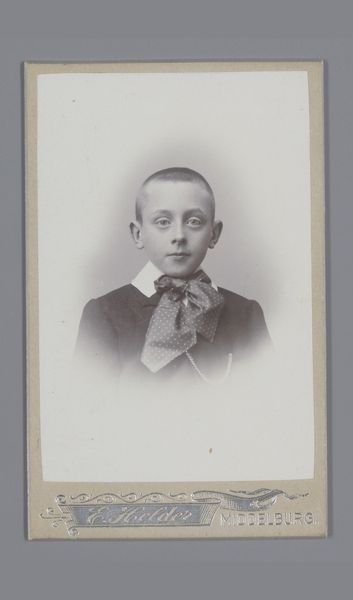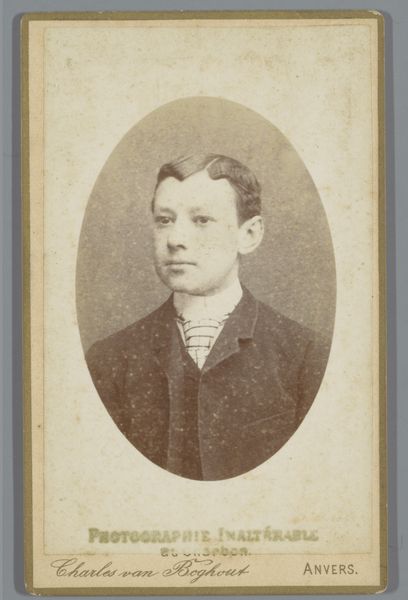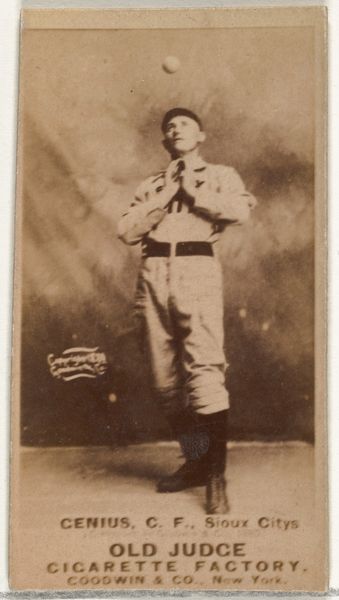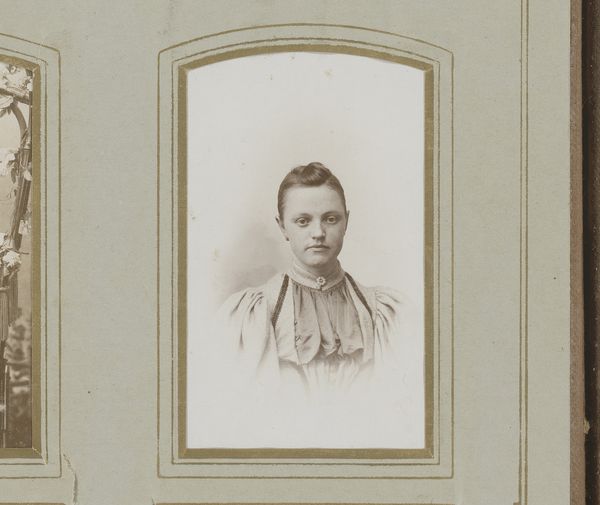
photography, gelatin-silver-print
#
portrait
#
historical design
#
aged paper
#
toned paper
#
16_19th-century
#
vintage
#
reduced colour palette
#
muted colour palette
#
photo restoration
#
retro 'vintage design
#
photography
#
historical fashion
#
gelatin-silver-print
#
19th century
Dimensions: height 105 mm, width 65 mm
Copyright: Rijks Museum: Open Domain
This is a portrait of an unknown young man in uniform, made by Laveuve in the carte-de-visite format. The albumen print, created by coating paper with albumen from egg whites and silver nitrate, was a popular method of photography in the 19th century. It produced a sharp image with fine detail, as we can see in the crispness of the young man’s uniform and face. The process was labor-intensive, requiring skill in preparing the emulsion, coating the paper, and controlling the exposure and development. The carte-de-visite itself was a product of mass production, enabled by the rise of commercial photography studios. These small, affordable portraits democratized image-making, making it accessible to a wider segment of society beyond the elite. They also became collectable, and were presented in albums, like postcards today. In looking at this image, consider the many hands involved in its creation, from the photographer to the darkroom assistants to the suppliers of photographic materials. It’s a reminder that every artwork is the result of complex social and economic networks.
Comments
No comments
Be the first to comment and join the conversation on the ultimate creative platform.
